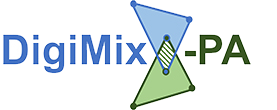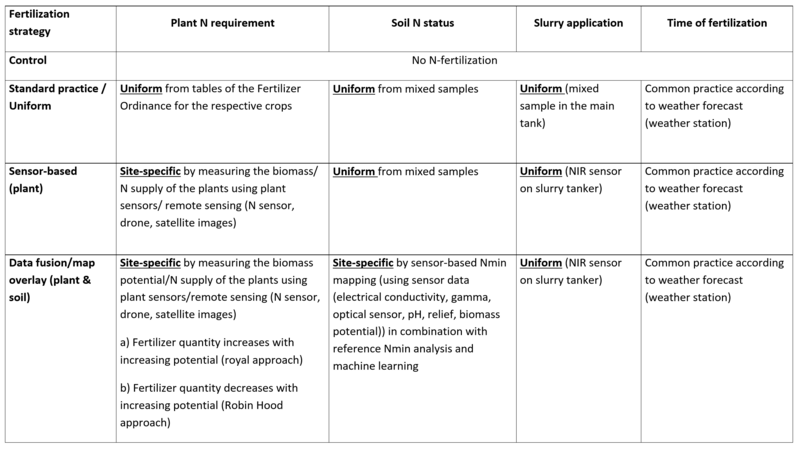Field trials for N fertilization
A core element of DigiMix-PA is the establishment of extensive field trials in which different N fertilization strategies are tested at different stages of digitization and evaluated for their economic and climate efficiency.
These different N fertilization strategies include:
1. Control (no N fertilization)
The control is used to record background nitrogen emissions for climate gas balancing. Neither organic nor mineral fertilizer is applied, so that the nutrient supply is provided solely by the incorporation of the catch crop.
2. Standard N fertilization
This strategy is based on the requirements of the Fertilizer Ordinance and uses mixed samples to determine the available nitrogen (Nmin) in different soil layers and derive a uniform N fertilizer requirement for each area. This is divided into three fertilizer applications: two organic and one mineral. The slurry is analyzed by an NIR sensor during filling in order to include the nitrogen content.
3. Sensor-based N fertilization
Sensor-based N fertilization uses sensor data to distribute the fertilizer as required according to the current biomass growth. The N sensor measures the nitrogen supply to the plants and provides the basis for determining the N requirement. The liquid manure is analyzed by the NIR sensor in the same way as with the standard farm strategy. The mineral fertilizer is applied on a site-specific basis, with the values on the application map being adjusted using sensor data. The aim is to standardize the plant population.
4. Data fusion (soil and plant data)
This fertilization strategy combines soil and plant data. Management zones with different yield potential are identified on the basis of vegetation and soil data and expert knowledge. Within these zones, general adjustments are made to the amount of nitrogen. Two different approaches are tested and compared:
a.) Kings approach: the amount of fertilizer increases with increasing yield potential
b.) Robin Hood approach: the amount of fertilizer decreases with increasing yield potential
In addition, a site-specific Nmin map is to be created. For this purpose, soil samples are taken and not combined into a composite sample as is conventionally done, but analyzed individually for Nmin. This laboratory data is then correlated with soil sensor, biomass and topography data. This map could replace the previous averaging of management zones and increase the precision of fertilization.
These four fertilization strategies address different levels of digitalization of nitrogen fertilization and the evaluation of their effects on economic efficiency and climate efficiency. Strategies 3 and 4 in particular investigate how modern sensors and data fusion can help to optimize fertilizer use and reduce environmental pollution. In addition, a nitrogen increase trial will be set up in parallel to determine the economically and ecologically optimal amount of N fertilizer and to investigate how far the four fertilization strategies are from this optimum.


